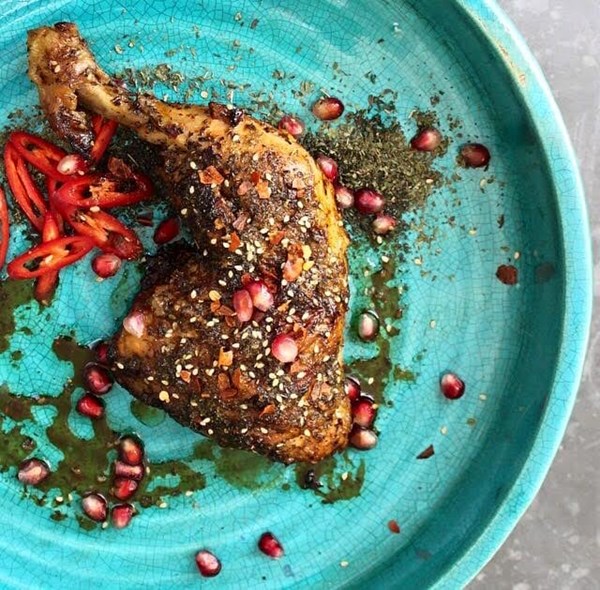Spice support: za’atar
August 3, 2019 by DarcieMiddle Eastern food has risen in prominence in the past few years, thanks to the excellent and approachable recipes provided by Yotam Ottolenghi, Anissa Helou, Michael Solomonov, John Gregory-Smith, Sabrina Ghayour, and others. These recipes contain ingredients that until recently were unfamiliar to most Western palates, including harissa, baharat, ras el hanout, and za’atar. Today we are going to dive into the last one in that list.

Za’atar is both an herb and a citrusy, woodsy spice blend that goes well with everything from meats to vegetables to breads. According to the Encyclopedia of Spices and Herbs, the herb is a type of wild mountain thyme that has a pungent aroma and intense flavor that resembles a blend of oregano, thyme, and marjoram. The herb is used in most, but not all, versions of the spice blend za’atar.
Matt Rodbard, writing for Taste Cooking, explains that the blend’s backbone is wild hyssop leaf (aka wild thyme), which is dried and mixed with sumac, marjoram, toasted sesame seeds, thyme, and salt. In Middle Eastern home cooking, za’atar is often used as a table condiment, especially as a dip for bread.
Although it might be difficult to find wild hyssop leaves, you can make a great za’atar blend at home without it using spices you either already have or that are easily found, including oregano, thyme, sesame seeds, and sumac. The EYB Library is a great place to explore recipes and uses for za’atar. Here are few to get you started:
- Za’atar from Little Curiousity Shop
- Za’atar from The Edible Atlas by Mina Holland
- Chicken marinated with za’atar, chilli & pomegranate molasses (Za’tar chicken) from Palastine on a Plate by Joudie Kalla (pictured)
- Za’atar spiced amonds from Soframiz by Ana Sortun and Maura Kilpatrick
- Roasted butternut squash & red onion with tahini & za’atar from Jerusalem by Yotam Ottolenghi and Sami Tamimi
- Barbecued poussins with za’atar and roast pumpkin houmous from A Bird in the Hand by Diana Henry
- Za’atar-lavash pizzas from Vegetarian Times Magazine
- Za’atar baked eggs from Food & Wine Magazine by Gail Simmons
Categories
- All Posts (7078)
- Antipasto (2208)
- Author Articles (250)
- Book News (944)
- Cookbook Giveaways (996)
- Cookbook Lovers (262)
- Cooking Tips (116)
- Culinary News (299)
- Food Biz People (558)
- Food Online (800)
- Holidays & Celebrations (277)
- New Cookbooks (154)
- Recipes (1520)
- Shelf Life With Susie (231)
- What's New on EYB (134)
Archives
Latest Comments
- fluffies on For the Love of Lemons by Letitia Clark – Giveaway
- Goulashgirl on Any way you slice it
- ChefClaireFVS on French at Heart – Cookbook Giveaway
- ChefClaireFVS on 20 Amici – 40 Ricette Cookbook Giveaway
- kitchen_chick on Salt Sugar MSG Cookbook Giveaway
- kitchen_chick on Balli Balli – Cookbook Giveaway and Quick Bites
- SCH on Introducing libraries to EYB at ALA
- FrenchCreekBaker on Four outstanding independently published cookbooks worth your attention
- breakthroughc on Any way you slice it
- Marymac54 on French at Heart – Cookbook Giveaway